Surfing is not like most sports. Plenty of people try surfing and decide it’s not for them, but once a beginner surfer catches his or her first wave and rides cleanly down the line, they’re hooked. Like all things worth doing, surfing requires a tremendous amount of time, patience, hard work, and even a bit of luck sometimes. Our surf coaches at our Nosara surf school, Safari Surf School, teach hundreds of new surfers every year. We’ve seen new surfers excel and master the basics quickly, and we’ve had students struggle wave after wave to find their feet. Each student, however, is thrilled after their first wave. The journey from riding your first wave to becoming a sufficiently skilled surfer is a long one, but it’s filled with endless small victories that make the road well worth traveling. To help new surfers transition to the intermediate level, we’ve compiled a list of common mistakes beginner surfers make and how to avoid them. Continue below to read Avoid These Common Beginner Surf Mistakes with Tips from Our Nosara Surf School.
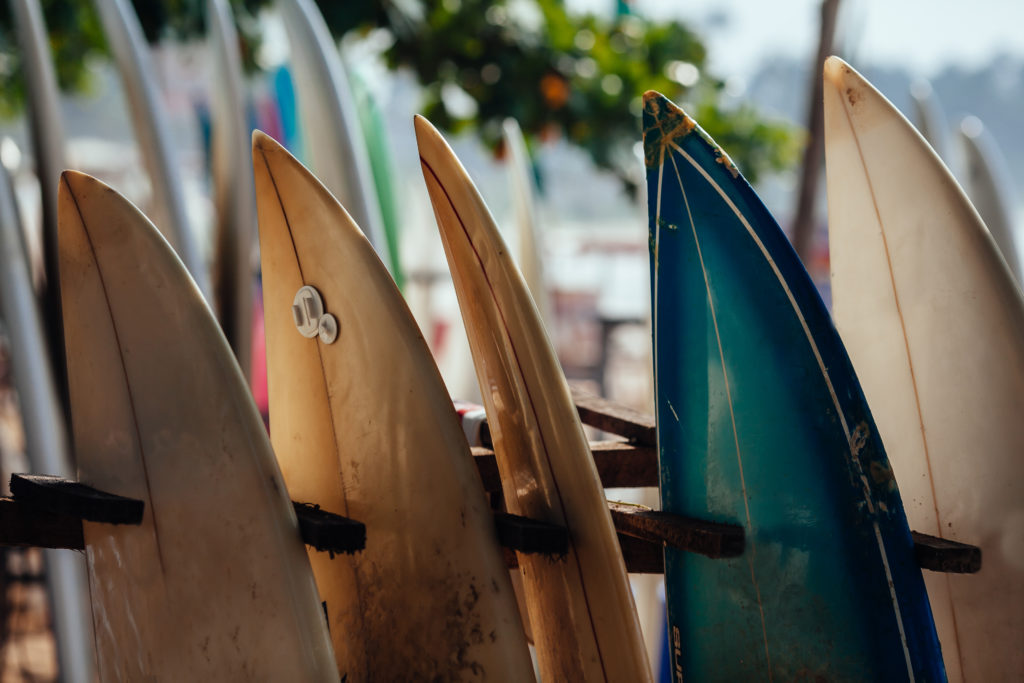
Choosing the wrong board
One common mistake that is persistent among beginner and intermediate surfers is the urge to ride the wrong board. More accurately, surfers often want and try to ride boards that are too small for their skill level. Perhaps they watch surfers on tour riding shortboards and think that choosing a similar board will give them similar abilities. At our Nosara surf school, our instructors have all new surfers start with learning longboards. Once a surfer has mastered paddling, popping up, and riding down the line, they move on to a proper longboard. A surfer should only begin to downsize their board when they’ve mastered the ability to turn and generate speed. After a longboard, a surfer should ride a mid-length, a fish/ groveler, and then finally, a shortboard.
Poor board positioning
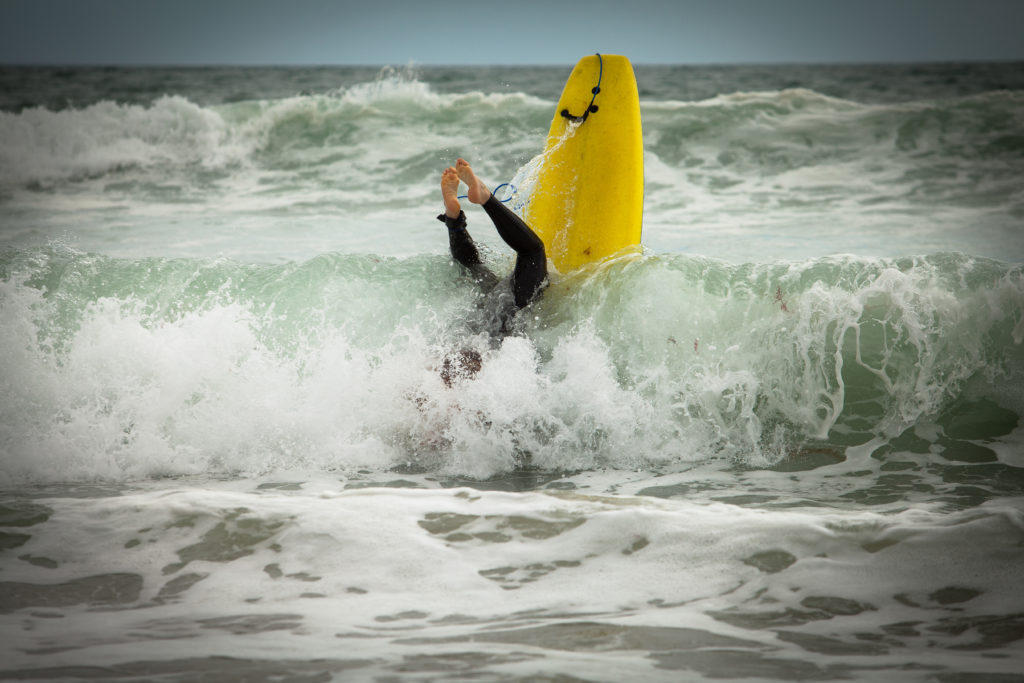
Another issue that plagues new surfers is poor board positioning, both while paddling and while riding. When paddling, your board must be balanced in the water so that when you paddle for a wave, you don’t nosedive (too far forward) or fail to catch the wave (too far back). To remember your board’s sweet spot, pay attention to where you are positioned compared to the board’s logo. As you progress, you’ll be able to find your board’s sweet spot by feel. While riding, if you’re too far back on your board, you’ll lose momentum, and the wave will roll under you. If you’re too far forward, you’ll fall. While riding, your positioning on the board is essentially your gas and breaks. Moving forward will increase your speed in slower sections of the wave, while move backward will slow you down.
Paddling without power
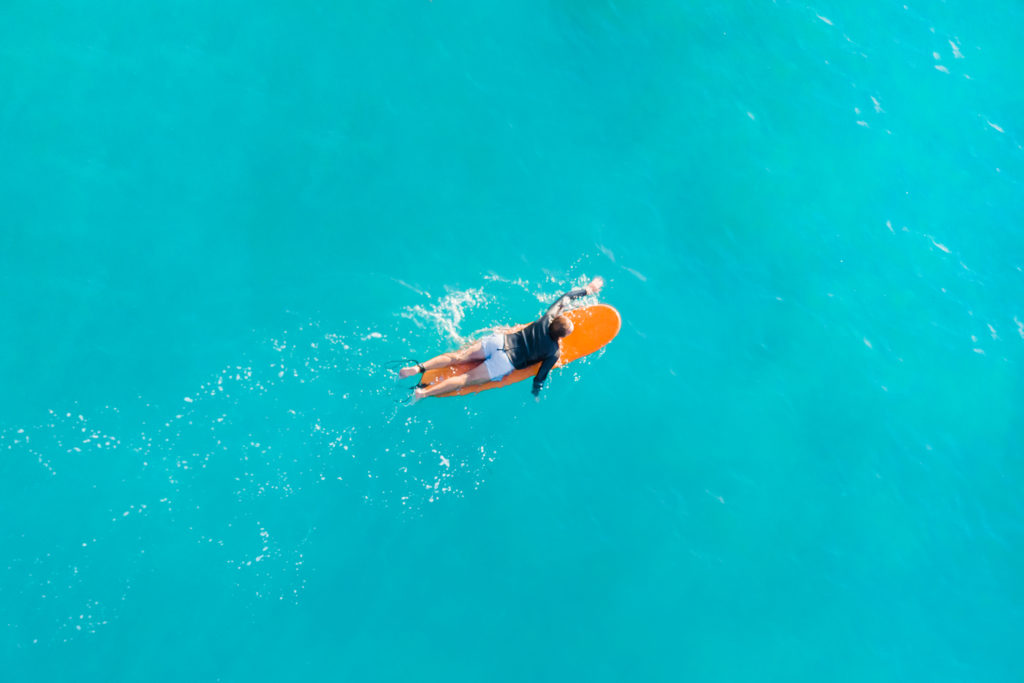
New surfers often underestimate the necessary paddle force required to gain momentum on a surfboard. To paddle into and catch a wave on your own, you need to match its speed, which requires paddling hard. New surfers usually paddle too slowly or paddle inefficiently. To paddle properly, dig a cupped hand into the water like you’re performing the freestyle stroke. Drag your hand back towards you until it is perpendicular under your board. Then continue the same stroke on the other side. Make sure you’re digging deep with each stroke so that you gain as much momentum as possible.
Not catching a wave at its peak
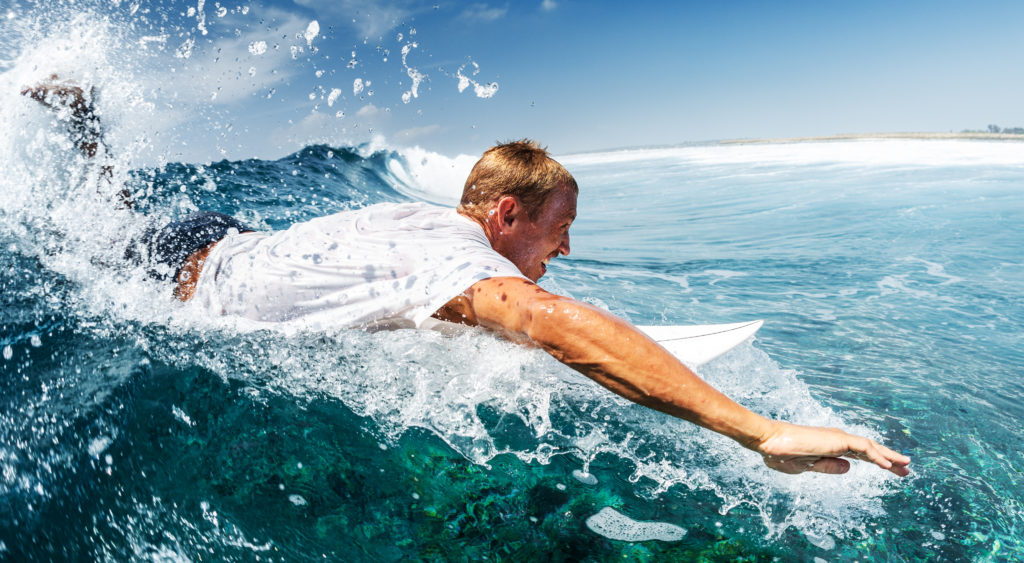
To maximize the potential of a wave, catch it at its peak. The peak of a wave is the wave’s highest point, where it first begins breaking. While you may be able to paddle into the shoulder of a stronger wave, most waves are only catchable at the peak. New surfers are often intimidated by the size of the peak and prefer to try to catch the smaller shoulder. Catching a wave at the peak gives you the best opportunity to get into the wave early, and the peak will likely have the easiest drop. At our home break in Nosara, Playa Guioness, our Nosara surf school instructors will help you identify the wave’s peak and learn when and how to paddle for the peak.
Improper popup mechanics
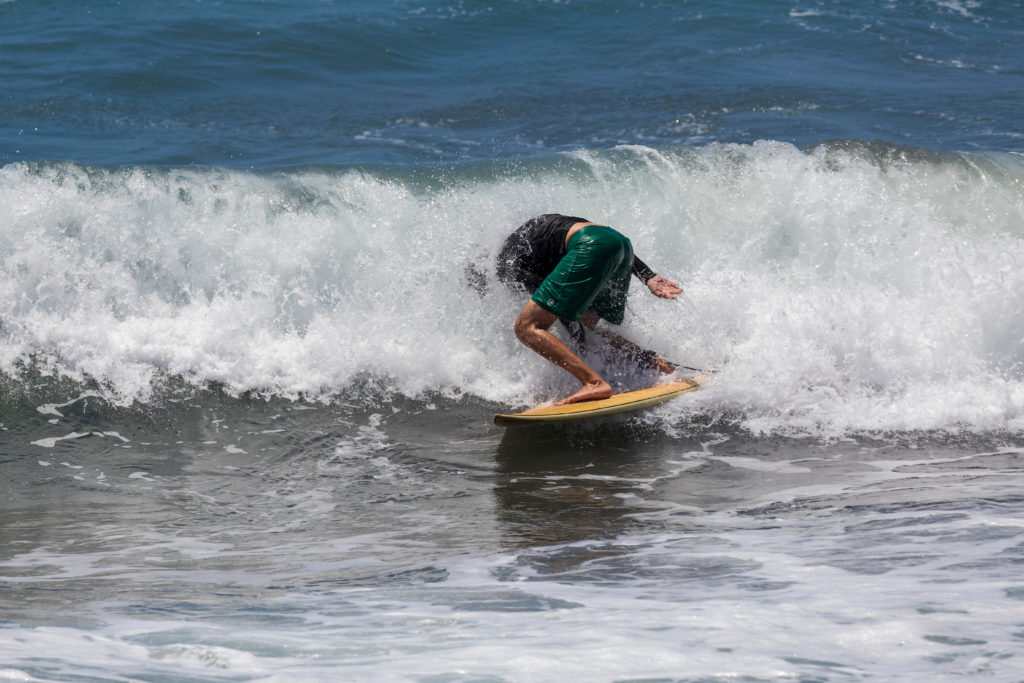
Paddling is the first step to wave riding, and popping up is the second. A popup can make or break an entire wave. Pop up too soon, and the wave will roll under you. Pop up too late, and the wave will have closed out. There are a few bad popup habits we see often at our Nosara surf school. When we spot these mistakes, we correct them immediately so that they don’t become lifelong issues. The most common paddling mistake is to use your back knee to help get to your feet. While using a knee may work while popping up on large learning boards, it won’t work as you downsize boards. Additionally, it’s much slower than the correct popup, where surfers jump to their feet. Another fatal popup flaw that we often see at our Nosara surf school is when surfers grab their rails (sides of the board) during their popup. Grabbing the rails will likely cause you to fall. Instead, place your hands flat on your board under your chest, like you’re about to perform a pushup.
Not looking down the line while riding
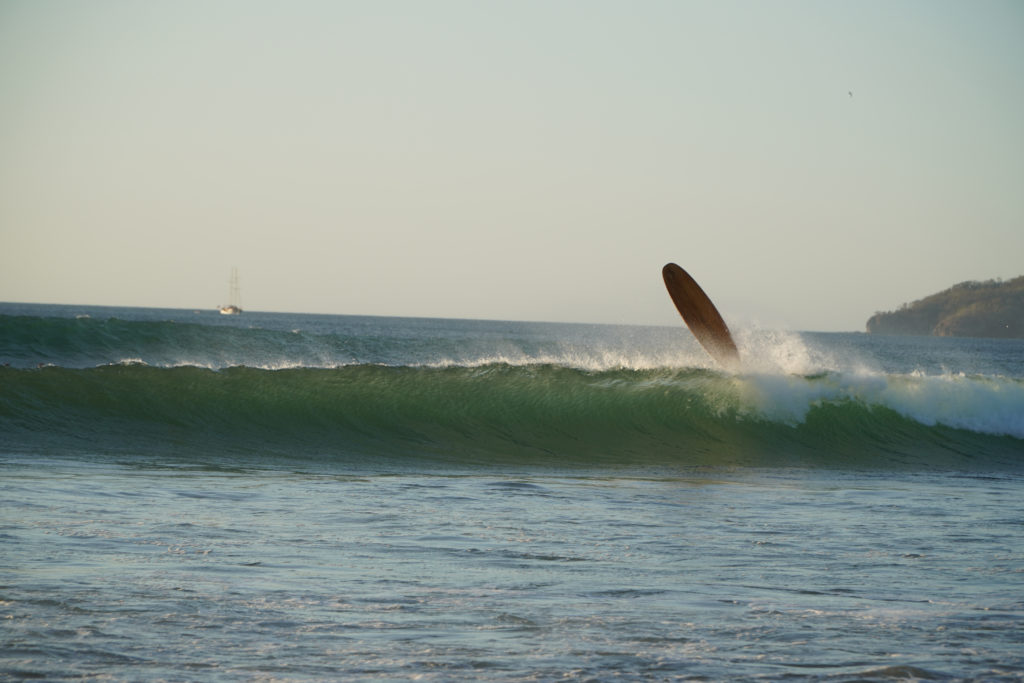
Once a surfer has mastered the popup, it’s time to start riding down the line. The simplest way for a surfer to ride cleanly down the line and not towards the beach is to look and face the direction they wish to ride. In surfing, your head acts as a steering wheel. As you pop up, turn your head and look down the line, your shoulders and body will follow.
For more surf tips, keep your eyes on our blog. If you’re ready to book your trip and your surf lessons at our Nosara surf school, head to our website. We can’t wait to see you in the water.

